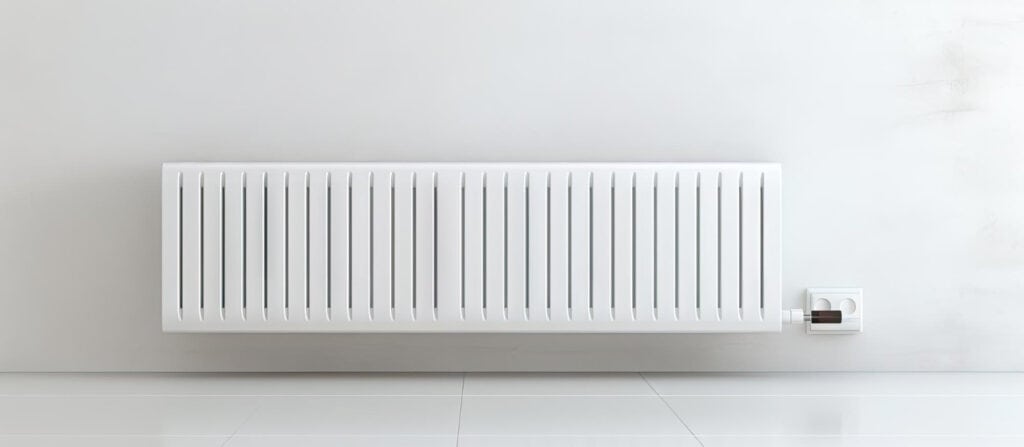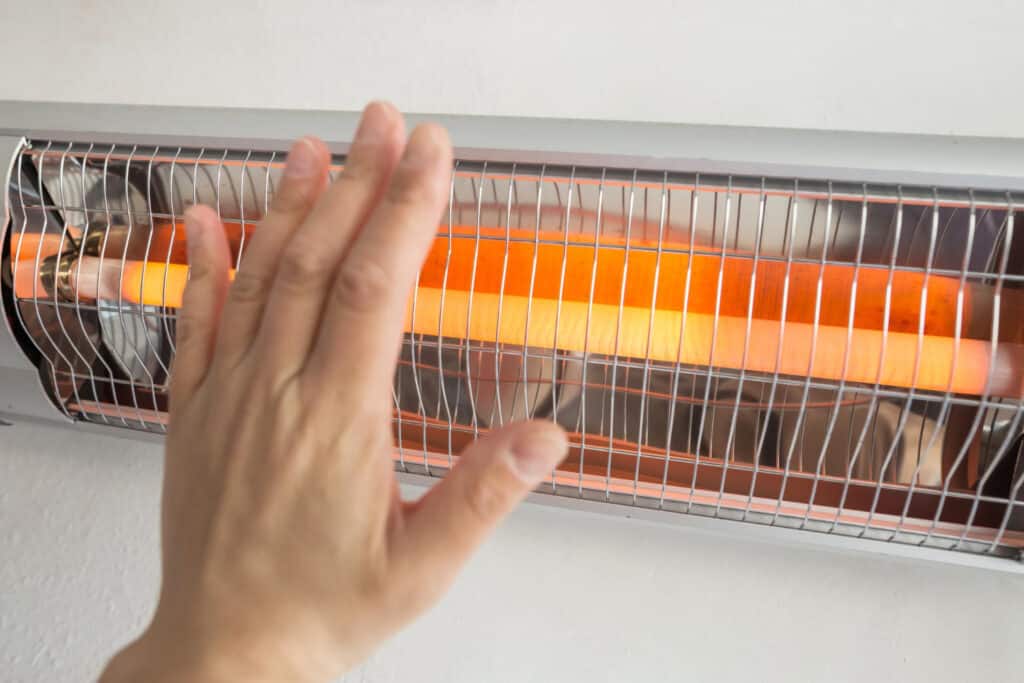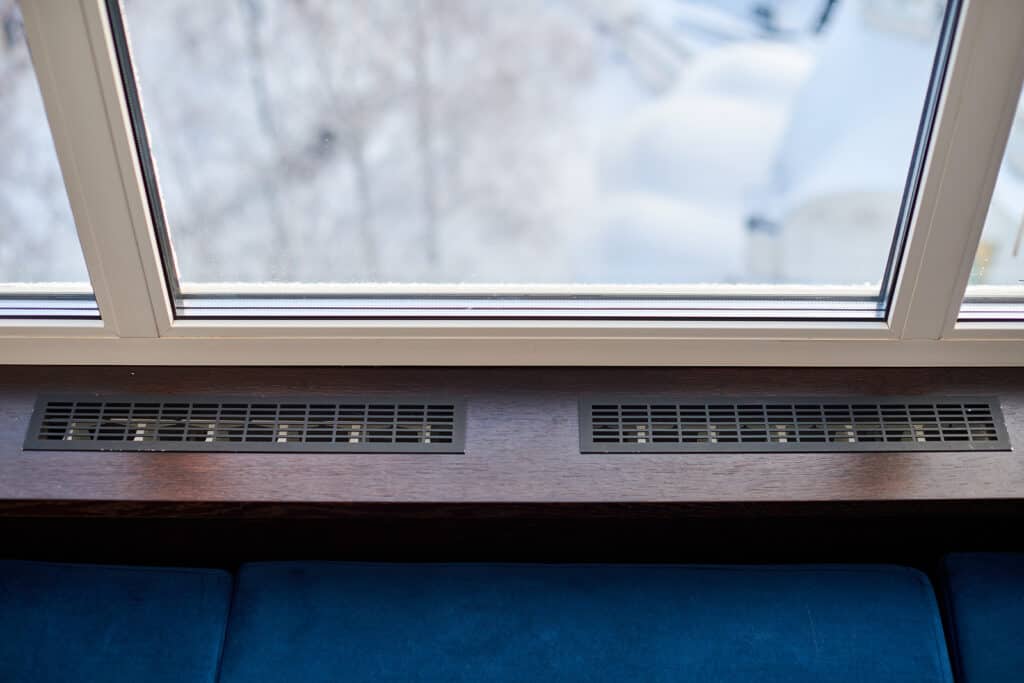I've always found baseboard heaters to be a reliable choice for keeping my home warm during those chilly winter months. These electric heating units have been a trusted companion for decades, especially in areas where the cold weather can be quite unforgiving.
In this in-depth guide, I want to take you on a journey into the realm of baseboard heater electricity usage. We'll uncover the inner workings of these heaters, discuss their energy efficiency, share some valuable tips to get the most out of them, and much more. So, let's dive right in and explore the world of baseboard heaters together!
Understanding Baseboard Heaters
Baseboard heaters offer a straightforward yet effective heating solution, operating based on the principles of convection. These heating devices consist of a heating element, typically constructed from metal, enclosed within a housing. When you activate a baseboard heater, electricity flows through the heating element, leading it to heat up.
As the element becomes hot, it emits warmth into the room. Simultaneously, the surrounding air warms up and rises, establishing a natural circulation of heated air throughout the space.
Diving deeper into the world of baseboard heaters, it's essential to recognize that there are two primary types available: electric resistance and hydronic (hot water) baseboard heaters. Electric resistance heaters are the more prevalent variety and operate by employing electric coils to generate heat. Conversely, hydronic heaters rely on heated water circulating through pipes to distribute warmth.
Each type offers its unique set of advantages and disadvantages, particularly in terms of electricity consumption and efficiency. Understanding these distinctions can help you make an informed decision when selecting a baseboard heater for your heating needs.

Electricity Consumption of Baseboard Heaters
When it comes to baseboard heaters, it's essential to grasp the intricacies of their energy consumption. This consumption is influenced by a variety of factors, including the heater's wattage, its operating duration, and the temperature setting. To calculate the precise energy consumption, one can use a simple formula:
Energy Consumption (in kilowatt-hours, kWh) = Power (in kilowatts, kW) x Time (in hours)
For instance, if you have a 1,500-watt baseboard heater running for 5 hours a day, the energy consumption would be:
Energy Consumption = 1.5 kW x 5 hours = 7.5 kWh per day
Factors that Influence Energy Consumption
To gain a comprehensive understanding of your baseboard heater's electricity usage, consider the following factors:
- Size and Wattage: The size and wattage of the heater significantly impact its energy consumption. Generally, larger heaters with higher wattages will consume more electricity to generate and maintain a desired temperature.
- Thermostat Settings: The temperature setting on your thermostat is another vital determinant. Setting it to a higher temperature will result in increased electricity consumption as the heater works harder to reach and maintain that level of warmth. Conversely, maintaining a lower but comfortable temperature can help conserve energy.
- Insulation: The level of insulation in your home plays a pivotal role in energy efficiency. Well-insulated homes are better at retaining heat, reducing the necessity for the baseboard heater to run continuously. This can lead to substantial energy savings over time.
Energy Efficiency of Baseboard Heaters
Pros and Cons of Baseboard Heater Electricity Use
Baseboard heaters, a popular choice for heating individual rooms, come with a range of benefits and drawbacks. While they offer advantages like room-by-room control, quiet operation, and straightforward installation, it's important to consider their energy efficiency, which may not be on par with some other heating systems.
Pros:
- Individual Room Control: Baseboard heaters excel at providing zoned heating, allowing you to tailor the temperature in each room to your preference. This can lead to energy savings by only heating the spaces you're actively using.
- Silent Operation: Unlike some heating systems that can be noisy, baseboard heaters operate quietly, ensuring a peaceful environment in your home.
- Easy Installation: Installing baseboard heaters is relatively simple and doesn't require extensive ductwork or complex setup, making them a convenient choice.
Cons:
- Energy Efficiency: One of the primary drawbacks of baseboard heaters is their relatively lower energy efficiency compared to more modern heating options. They can consume a significant amount of electricity, potentially leading to higher energy bills.
Modern Energy-Efficient Solutions
If energy efficiency is a priority for you, there are options to mitigate the drawbacks of baseboard heaters:
- Modern Models: Consider investing in newer baseboard heater models designed with energy efficiency in mind. These units often come equipped with advanced features to help reduce electricity consumption while maintaining comfort.
- Programmable Thermostats: Look for baseboard heaters that include programmable thermostats. These allow you to set specific heating schedules and temperatures, optimizing energy use by heating rooms only when needed.
- Digital Controls: Digital controls offer precise temperature adjustments, enabling you to fine-tune your heating settings for optimal comfort and energy savings.
- Improved Insulation: Choose baseboard heaters with enhanced insulation to minimize heat loss, ensuring that more of the generated warmth stays in the room.

Optimizing Baseboard Heater Electricity Use
When it comes to optimizing the electricity use of your baseboard heaters, several key strategies can help you reduce energy consumption and lower your utility bills.
Thermostat Settings
Properly configuring your thermostat is a fundamental step in optimizing baseboard heater electricity use. Consider investing in programmable thermostats that allow you to schedule heating cycles. This enables you to lower the temperature when you're away from home or asleep, conserving energy without sacrificing comfort. Additionally, if your home allows for it, dividing your living space into zones with separate thermostats can further enhance efficiency. Zoning lets you heat only the rooms in use, minimizing unnecessary energy consumption.
Proper Placement
The location of your baseboard heaters can significantly impact their efficiency. To maximize their effectiveness, position them along exterior walls and beneath windows. These areas are prone to heat loss, and placing heaters there helps counteract this effect by directing heat where it's needed most. Avoid obstructing your baseboard heaters with furniture or curtains, as these can impede airflow and reduce heating efficiency.
Insulation and Sealing
Ensuring that your home is well-insulated and properly sealed is crucial for preventing heat loss and minimizing the workload on your baseboard heaters. Consider improving insulation in walls, floors, and attics to keep the warm air inside your home. Additionally, identify and seal any gaps or cracks around windows, doors, and walls to maintain a consistent indoor temperature and prevent cold drafts.
Comparing Baseboard Heaters with Other Heating Options
When considering the heating options for your home, it's essential to weigh the pros and cons of different systems. Baseboard heaters have their advantages, but there are alternative options that may better suit your needs.
Central Heating Systems
Central heating systems, such as furnaces and heat pumps, are known for their energy efficiency. They can be particularly advantageous for larger homes where maintaining a consistent temperature throughout the entire space is essential. However, it's important to note that central heating systems come with higher upfront installation costs compared to baseboard heaters. Additionally, they may not provide the same level of room-by-room temperature control, which could be a drawback if you prefer personalized comfort in different areas of your home.
Heat Pumps
Heat pumps offer another energy-efficient alternative to baseboard heaters. These systems work by transferring heat from the outside environment into your home, making them highly efficient in terms of energy usage. While they do require a larger initial investment, the potential long-term energy savings can offset this cost. Heat pumps are especially beneficial in moderate climates where they can provide both heating and cooling capabilities.
Radiant Floor Heating
Radiant floor heating is a luxurious and energy-efficient heating option that warms your living space from the ground up. This system involves heating the floor surface, which then radiates warmth throughout the room. While it offers exceptional energy efficiency, it typically necessitates professional installation, which can add to the overall expense. However, the comfort and energy savings it provides can make it a worthwhile investment, especially in areas where winters are particularly harsh.
Wood-Burning Stoves
Wood-burning stoves are a traditional heating option that relies on burning wood to generate warmth. They are often used in rustic or rural settings and can be a cost-effective way to heat your home if you have access to a steady supply of firewood. However, they require ongoing maintenance, regular cleaning, and can be less convenient compared to modern heating systems.
Pellet Stoves
Pellet stoves are a more modern and environmentally friendly alternative to wood-burning stoves. They burn compressed wood pellets to produce heat efficiently. Pellet stoves can be automated to some extent, and they emit fewer emissions compared to traditional wood stoves. However, they do require a supply of pellets, which can add to the operational costs.
Electric Furnaces
Electric furnaces use electricity to generate heat and distribute it through your home's ductwork. They are easy to install and often more affordable upfront compared to other central heating systems. However, they tend to have higher operational costs, making them less energy-efficient over time, especially in regions with expensive electricity rates.
Solar Heating Systems
Solar heating systems harness energy from the sun to provide heating for your home. They can consist of solar panels or solar thermal collectors that capture sunlight and convert it into heat. While they are highly eco-friendly and can lead to significant energy savings, their effectiveness can be influenced by local climate conditions and upfront installation costs.
Geothermal Heat Pumps
Geothermal heat pumps use the stable temperature of the Earth's subsurface to provide both heating and cooling. These systems are highly energy-efficient and environmentally friendly but require substantial upfront investment. Over time, they can offer substantial savings on energy bills and reduce your carbon footprint.
Baseboard Heater Safety Considerations
Fire Safety
Baseboard heaters, while effective for heating, can pose a significant fire hazard if proper precautions are not taken. It is crucial to be aware of the following fire safety considerations:
- Clear Surroundings: To minimize the risk of fire, maintain a safe distance between baseboard heaters and flammable materials such as curtains, upholstered furniture, and papers. A minimum clearance of at least 12-18 inches is recommended to prevent overheating and ignition.
- Regular Inspection: Conduct routine inspections of your baseboard heaters to identify any signs of damage or malfunction. Look for frayed wires, cracked components, or unusual odors, and address any issues promptly to prevent potential fire hazards.
- Keep It Clean: Accumulated dust and debris can not only affect the efficiency of your heater but also increase the risk of overheating. Clean the heater's fins and surrounding areas regularly to ensure proper airflow and reduce the risk of fire.
Electrical Safety
Proper electrical installation and maintenance are crucial for ensuring the safe operation of baseboard heaters. Here are essential electrical safety considerations:
- Professional Installation: Hire a qualified electrician to install your baseboard heaters. They will ensure that the electrical wiring and connections are correctly set up, reducing the risk of electrical hazards.
- Wiring Inspection: Periodically check the condition of the wiring and connections for signs of wear and tear. Loose or damaged wiring can lead to electrical problems, including shorts and fires. Address any issues promptly to maintain electrical safety.
Maintenance Tips for Efficiency and Safety
Regular maintenance not only extends the lifespan of your baseboard heaters but also enhances their efficiency. Follow these maintenance tips to ensure your heaters operate safely and effectively:
- Dust and Debris Removal: Dust and debris can accumulate on the heater's fins, obstructing airflow and causing overheating. Regularly clean the fins and surrounding areas to prevent fire hazards and maintain optimal heating performance.
- Component Inspection: Check for loose or damaged components such as knobs, switches, and thermostat controls. Tighten or replace any parts that show signs of wear to prevent electrical issues and ensure safe operation.
- Motor Lubrication: Some baseboard heater 120v have motors that benefit from occasional lubrication. Consult your heater's manual or manufacturer's recommendations for guidelines on motor lubrication to prevent premature wear and maintain efficient functioning.
Baseboard Heater FAQs
Q: Do baseboard heaters use a lot of electricity?
A: Baseboard heaters can consume a significant amount of electricity, especially if they are used as the primary heating source in a home. Their energy consumption depends on factors like the size of the heater, the temperature setting, and the insulation of the room. While they are known for being less energy-efficient compared to other heating options like central heating or heat pumps, their electricity usage can vary, and it's essential to consider energy-saving measures and proper insulation to minimize costs.
Q: Is it expensive to run baseboard heating?
A: The cost of running baseboard heating can vary depending on several factors, including the local electricity rates, the size and efficiency of the heaters, and the insulation of the building. Generally, baseboard heaters can be more expensive to run compared to other heating systems, especially in regions with high electricity prices. However, some people may find them cost-effective for heating individual rooms or spaces where other heating options are impractical.
Q: Can I use a thermostat with baseboard heaters?
A: Yes, you can use a thermostat with baseboard heaters to control the temperature and improve energy efficiency. Some baseboard heaters come with built-in thermostats, while others can be retrofitted with compatible thermostats. Installing a thermostat allows you to set desired temperature levels, schedule heating periods, and maintain more precise control over your heating system.
Q: Are there different types of baseboard heaters? A: Yes, there are different types of baseboard heaters available, including electric and hydronic (hot water) baseboard heaters. Electric baseboard heaters use electricity to generate heat, while hydronic baseboard heater 120 volt use hot water or a mixture of water and antifreeze to provide warmth. Each type has its advantages and disadvantages, so it's essential to choose the one that best suits your heating needs.
Q: Are baseboard heaters suitable for every room in my home?
A: Baseboard heaters can be used in various rooms and spaces, but their suitability depends on factors like room size, insulation, and heating requirements. They are often used as supplemental heating in bedrooms, living rooms, or areas where central heating is insufficient. However, in larger rooms or open spaces, they may not distribute heat evenly, so you might need multiple units or consider alternative heating options.
Conclusion
In my personal experience, baseboard heaters have been a trusted and reliable choice for keeping my home warm during chilly winter months. While I appreciate their simplicity and the comfortable warmth they provide, it's crucial to recognize their electricity consumption and take steps to optimize efficiency. Understanding factors like thermostat settings, insulation, and proper placement has allowed me to strike a balance between comfort and energy savings.
Exploring various heating options, I've learned that there are alternatives with different advantages, such as central heating systems or heat pumps for overall energy efficiency. However, baseboard heaters remain a practical solution for specific heating needs. By embracing energy-saving practices and staying vigilant about safety measures, I've found that cadet baseboard heaters can continue to be a reliable companion in my quest for a cozy and efficient home during winter.
Sources
https://nvlpubs.nist.gov/nistpubs/Legacy/BMS/nbsbuildingmaterialsstructures115.pdf
https://www.energy.gov/energysaver/electric-resistance-heating

